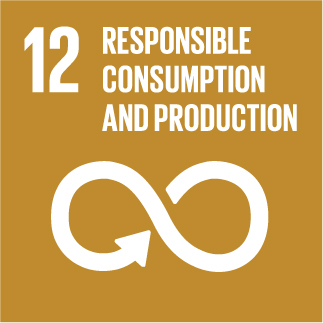URBANREC
Lignin, a biomass crosslinker, in a shape memory polycaprolactone network
A new lignin?based shape memory polymer is synthesized by using lignin as a biomass crosslinker and hard segment in four?arm polycaprolactone. The single?step?modified natural lignin is covalently crosslinked to a thiol of polycaprolactone via a photo?redox thiol?ene reaction. The new lignin?crosslinked polycaprolactone demonstrates thermal responsive shape memory behavior. Varying the % weight of lignin allows for precise and convenient tunability of the thermal properties.ABSTRACTThis work reports a new direction of natural lignin valorization, which utilizes lignin to produce crosslinked polycaprolactone (PCL) via a straightforward synthesis. Lignin's hydroxyl groups of its multibranched phenolic structure allow lignin to serve as crosslinkers, whereas the aromatic groups serve as hard segments. The modified natural lignin containing alkene terminals is crosslinked with a thiol?terminal PCL via Ru?catalyzed photoredox thiol?ene reaction. The high rate of gel contents measured for all crosslinked polymers, with the least being 84% of gel content, indicates efficient crosslinking. The prepared flat rectangular shape lignin?crosslinked PCL sample demonstrates rapid thermal responsive shape memory behavior at 10??C and 80??C showing interconversion between a permanent and temporary shape. The melting temperature of the lignin?crosslinked PCL is tunable by varying the percent weight of lignin. The 11, 21, and 30?wt % lignin demonstrated Tm of 42??C, 35??C, and 26??C, respectively. The role of lignin as a crosslinker presented in this work suggests that lignin can serve as an efficient biomass?based functional additive to polymers. ? 2019 Wiley Periodicals, Inc. J. Polym. Sci., Part A: Polym. Chem. 2019

» Author: Hailing Liu, Nuverah Mohsin, Sundol Kim, Hoyong Chung
» Reference: doi:10.1002/pola.29483
» Publication Date: 06/09/2019
» More Information

This project has received funding from the European Union's Horizon 2020 research and innovation program under grant agreement Nº 690103




URBANREC Guidelines by URBANREC Consortium is licensed under a Creative Commons Reconocimiento-NonComercial-NoDerivatives 4.0 Internacional License.
Puede hallar permisos más allá de los concedidos con esta licencia en www.aimplas.net
